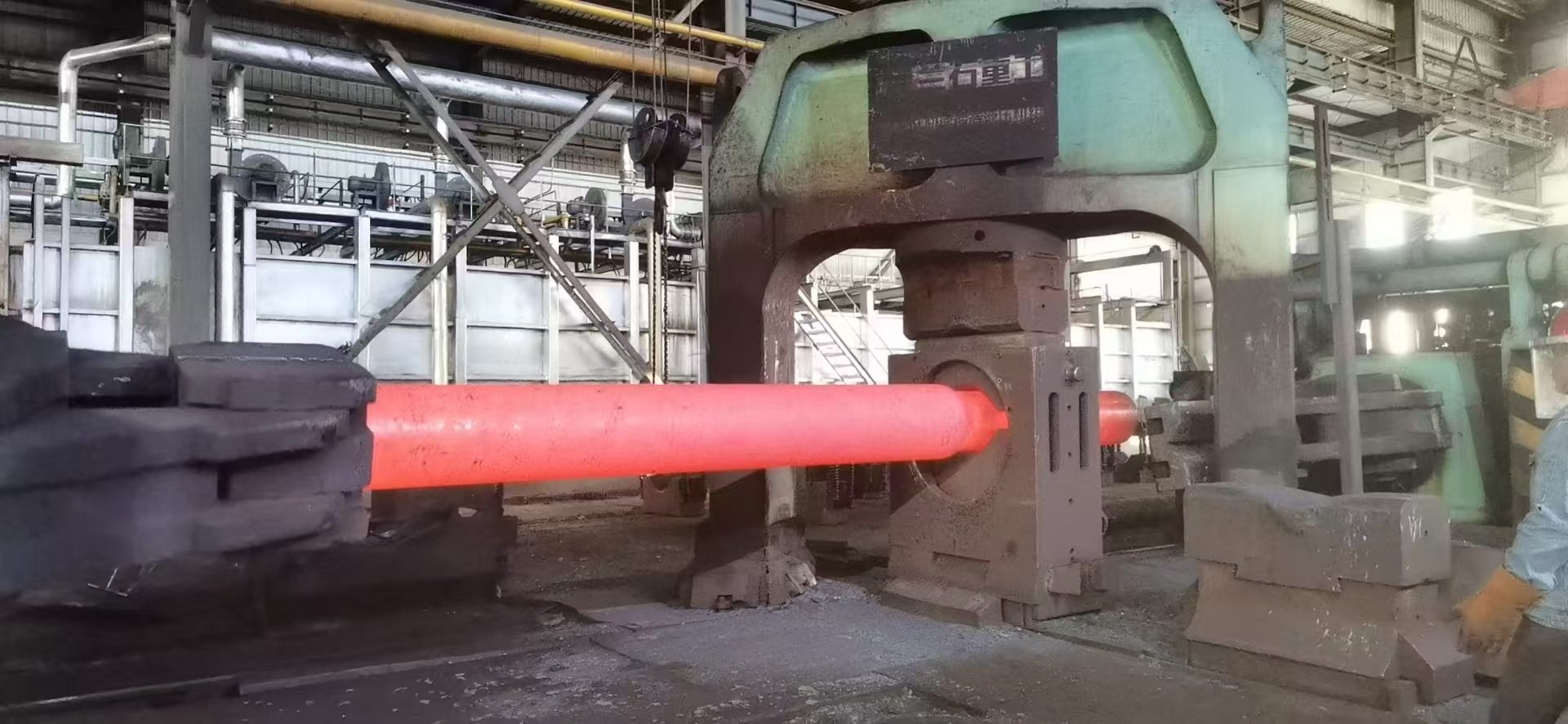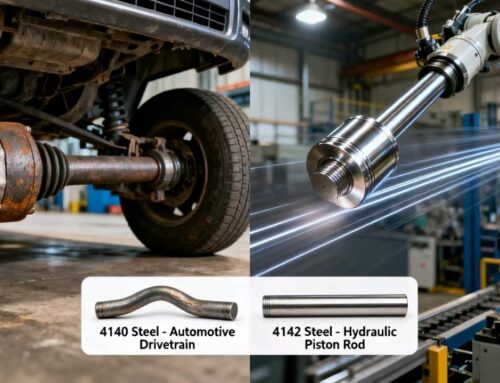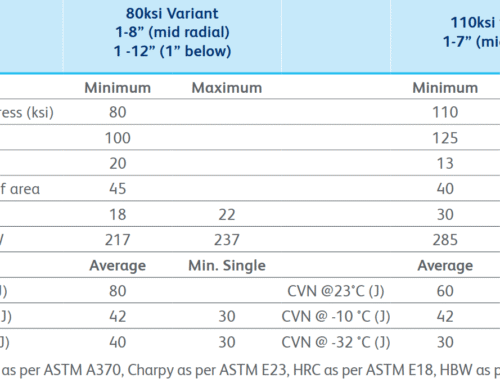The forging ratio of special steel is one of the key parameters in the forging process, which directly affects the material’s density, grain refinement, mechanical properties and defect elimination effect. Its specific value varies depending on the material type, application and process requirements, and usually needs to be determined by combining theoretical calculations and practical experience. The following is a detailed analysis:
1. Definition & Calculation Method of Forging Ratio
Forging ratio is an indicator to measure the degree of plastic deformation of forgings, which is usually calculated in the following two ways:
- Cross-sectional area ratio: forging ratio = original cross-sectional area/cross-sectional area after forging
- Length ratio: forging ratio = length after forging/original length
For example, if a cylindrical billet is forged from a diameter of 200mm to 100mm, the forging ratio is ((200/100)^2 = 4). In the drawing process, if the cross-sectional area is reduced from 1000mm² to 250mm², the forging ratio is (1000/250 = 4).
Generally, a forging ratio > 2 is required to effectively improve the material structure, but the specific value needs to be adjusted according to the process.
2. Forging Ratio Range of Different Processes
| Process type | Typical forging ratio range | Description |
| Free forging-Drawing | 3~5 (common),Up to 10 | For shafts and rods; high alloy steel or difficult to deform materials may require a higher ratio. |
| Free forging-Upsetting | 2~3 | Avoid excessively high ratios that lead to instability or folding defects. |
| Die forging | 1.5~3 | Due to die limitations, the deformation is small and suitable for parts with complex shapes. |
| Multiple upsetting and drawing | Total ratio 6~10 | Accumulated through multiple upsetting and drawing, used for high-quality forgings (such as aviation turbine disks). |
3. Typical Range of Forging Ratio of Special Steels
The forging ratio of special steels (such as tool steel, stainless steel, high-temperature alloy, high-strength structural steel, etc.) is usually higher than that of ordinary steels to improve their microstructure and performance. The common range is as follows:
1. General special structural steel (such as 4340 Steel)
- Forging ratio: 3~6
- Goal: eliminate casting defects, refine grains, and improve strength and toughness.
2. Tool steel (such as H13 steel, D2 tool steel)
- Forging ratio: 5~8
- Reason: High-carbon high-alloy steel is prone to carbide segregation, and large deformation is required to homogenize the structure.
3. Stainless steel (such as martensitic stainless steel, duplex stainless steel)
- Forging ratio: 4~7
- Key points: avoid σ phase precipitation and control the ratio of ferrite to austenite.
4. High-temperature alloys (such as Inconel 718, GH4169)
- Forging ratio: 6~10
- Difficulty: high degree of alloying, large deformation is required to break coarse grains and inhibit recrystallization.
5. Titanium alloys and special metals
- Forging ratio: 5~12
- Special requirements: Titanium alloys are sensitive to deformation temperature and need to be combined with isothermal forging to control the structure.
4. Key Factors Affecting Forging Ratio
1. Material properties
- Materials with high alloying element content (such as high-speed steel and nickel-based alloys) require a higher forging ratio to homogenize the structure.
- When there are many defects in the as-cast structure (shrinkage cavities, porosity), a large forging ratio is required to eliminate them.
2. Process goals
- Ordinary forgings: a forging ratio of 3~5 can meet the performance requirements.
- High reliability parts (such as aircraft engine blades): the forging ratio must be ≥8, and even higher through multi-directional forging.
3. Process route
- Multi-fire forging: The total forging ratio is the product of the forging ratios of each fire (for example, a process with a forging ratio of 4 for two times, and a total forging ratio of 16).
- Isothermal forging: For difficult-to-deform materials, the forging ratio can be reduced but the insulation time needs to be extended.
4. Equipment capacity limitations
- Large forgings are limited by the tonnage of the press and may not be able to reach the theoretical forging ratio, so the process path needs to be optimized.
5. Effect of Forging Ratio on Material Properties
- Grain refinement: The larger the forging ratio, the more complete the dynamic recrystallization and the smaller the grain size (for example, when the forging ratio increases from 3 to 8, the grain size can be increased from ASTM grade 5 to grade 8).
- Anisotropy: Too high a forging ratio may cause excessive extension of fiber streamlines and produce directional mechanical differences.
- Defect control: When the forging ratio is ≥4, shrinkage holes and microcracks can be effectively closed.
- Balance between strength and toughness: When the forging ratio is insufficient (<3), the material toughness is low; when it is too high (>10), the plasticity may decrease due to work hardening.
6. Practical Application Cases
1. Aviation turbine disc (Inconel 718)
- Forging ratio: 8~10, using multi-directional die forging combined with isothermal forging to ensure high temperature creep performance.
2. Tool steel Block (H13)
- Forging ratio: 6~8, improving carbide distribution through repeated upsetting and drawing to extend die life.
3. Nuclear power stainless steel pipeline (316LN)
- Forging ratio: 5~7, controlling ferrite content and improving stress corrosion resistance.
7. Summary
The forging ratio of special steel is generally between 3 and 10, and should be determined according to the following principles:
- Lower limit: at least 3 to ensure basic density and defect elimination.
- Upper limit: not exceeding the plastic limit of the material (such as the critical forging ratio of some high-temperature alloys is 12).
- Optimization direction: Combine numerical simulation and experiment to balance microstructure refinement and process cost.
Finally, the rationality of the forging ratio needs to be verified through metallographic inspection and mechanical property testing (such as impact toughness and fatigue strength).




